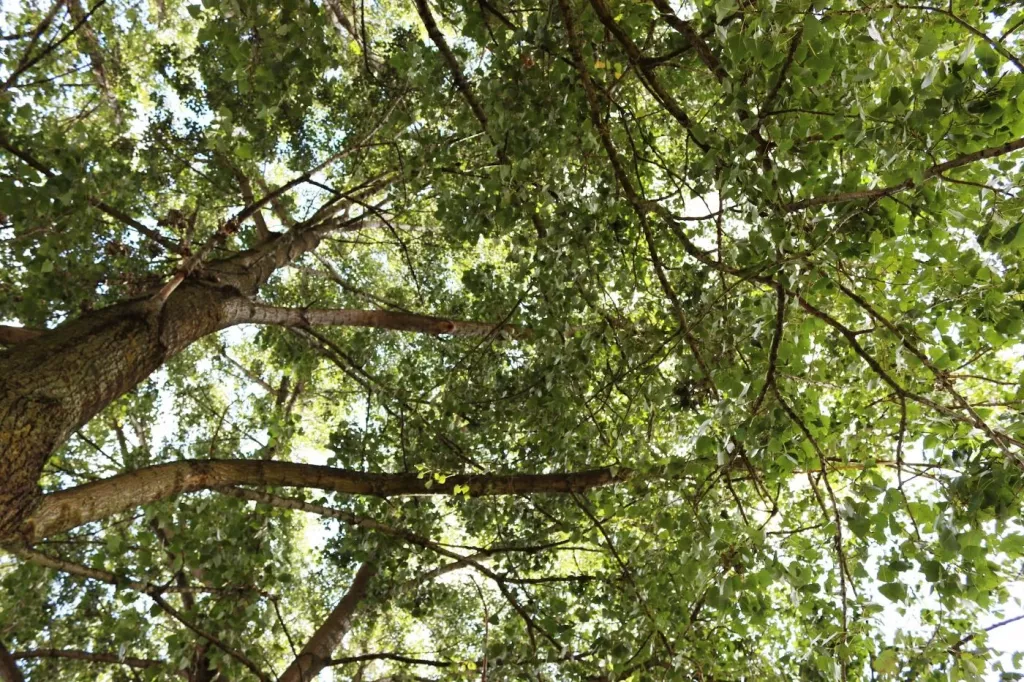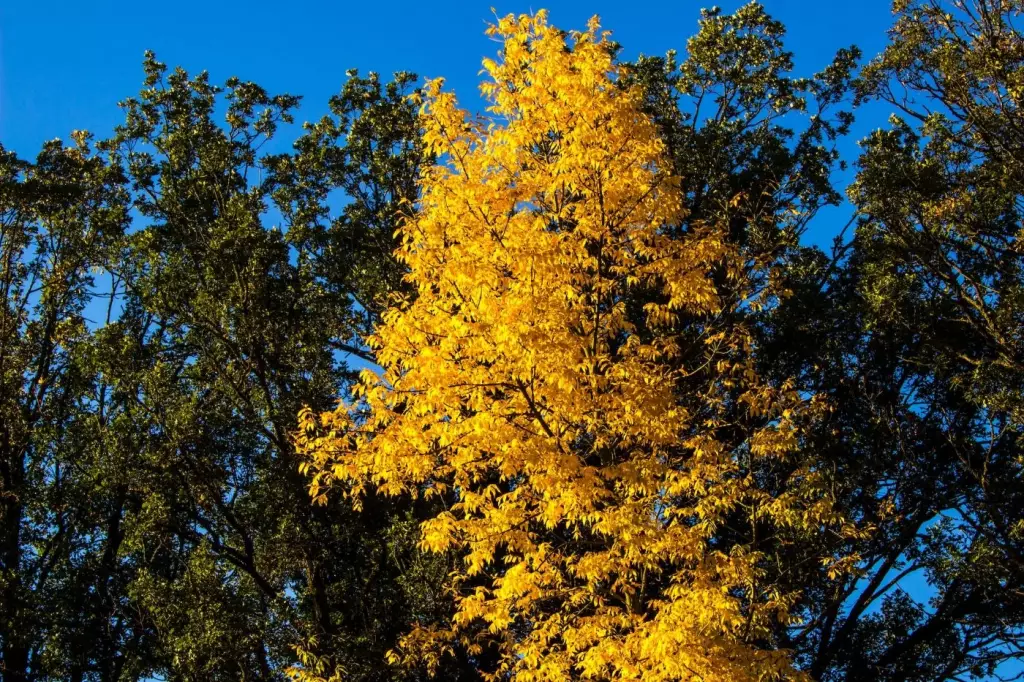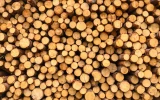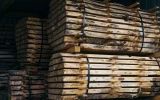How Much Is a Ton of Timber Worth? (9 Species)
The species of your trees is one of the most important factors affecting their timber value, with species like black walnut having more value than softwood species like pine and spruce. In this article, we'll let you know how much a ton of timber is worth for nine different tree species.
Pine timber is priced at $25 to $35 per ton, while oak, beech, maple, ash, and cherry timber are priced at around $50 to $70 per ton. Cedar and birch are valued at around $30 to $40 per ton. Walnuts have the highest value of around $80 to $100 per ton.
Aside from species, the quality of the timber is another factor that influences its value. Low-quality timber that has defects may have reduced value. Let's take a closer look at other factors that impact the value of timber.
Summary
- Hardwood species such as oak, walnut, cherry, and maple are generally more valuable than softwood species such as pine and cedar, with the price per ton ranging from $50 to $100 for hardwoods and $25 to $40 for softwoods.
- The straight grain and few knots of premium-quality ash timber can fetch a much higher price, upwards of $200 per ton, while the beautiful, rich, and dark color of walnut timber makes it highly prized and worth around $80 to $100 per ton.
- The scarcity of walnut trees contributes to the higher price of walnut timber, which can range from $80 to $100 per ton.

On this page:
Value of a Ton of Timber for 9 Different Tree Species
The table below shows different timber species and their estimated price per ton:
| Timber Species | Price per Ton |
|---|---|
| Pine | $25 - $35 |
| Oak | $50 - $70 |
| Cedar | $30 - $40 |
| Maple | $50 - $70 |
| Birch | $30 - $40 |
| Ash | $50 - $70 |
| Walnut | $80 - $100 |
| Cherry | $50 - $70 |
| Beech | $50 - $70 |
Pine timber pricing per ton
Pine is one of the most common types of timber, and its current average price for pine timber is around $25 to $35 per ton. Yellow pine can be worth between $10 and $20 per ton.
On the other hand, higher quality pine such as southern pine or longleaf pine can be worth between $30 and $50 per tonIn the US, the value of pine trees typically ranges from $500 to $5,000 per acre, with quality timberland reaching up to $10,000 or more.
Pine is a softwood species that is commonly used for construction and paper products. Their timber is known for its strength, durability, and straight grain. It is also relatively easy to work with and can be used for a variety of applications.
However, pine timber is susceptible to rot and decay if not properly treated and maintained. You need to properly dry and store pine timber to prevent warping and cracking.
Additionally, pine timber can be prone to insect infestations, so you might need to take preventative measures such as treating the wood with insecticides.
Oak timber pricing per ton
Oak is a highly sought-after hardwood, and its value of around $50 to $70 per ton reflects that. Red oak can be worth anywhere from $20 to $30 per ton, while white oak can be worth between $30 and $40 per ton.
Oak timber is highly valued for its unique characteristics such as its strength, durability, and attractive grain patterns. It is a dense hardwood that is resistant to wear and tear, making it ideal for use in furniture, flooring, and construction.
It is also highly resistant to rot and insect infestations, which makes it a popular choice for outdoor projects such as decks and fences.
Oak has a distinctive, coarse grain that creates a beautiful and unique pattern when cut and finished, which also contributes to its high value. This makes oak highly desirable for use in high-end furniture and decorative woodwork.
The high demand for oak timber, coupled with its limited availability, has driven up its price per ton. Oak trees grow slowly and take many years to mature, which makes them less abundant than other types of trees.
Additionally, oak forests are often protected, which limits the amount of oak timber that can be harvested. To know the timber value of different sizes of large oak trees, you can try reading this article.
Cedar timber pricing per ton
The current price for cedar timber is around $30 to $40 per ton. Western red cedar can be worth between $20 and $30 per ton.
One of the unique characteristics of cedar timber is its durability and natural resistance to decay and insect infestation. This makes it a popular choice for outdoor projects such as decking, fencing, and siding.
Cedar is also known for its distinct aroma and attractive appearance, with a range of colors from light browns to deep reds. They grow more slowly than other softwood species, which means that it takes longer to produce usable timber.
Additionally, cedar trees are typically found in specific regions, such as the Pacific Northwest of the United States and Canada, which further limits the supply.
Maple timber pricing per ton
Maple is a versatile hardwood that is commonly used for furniture and flooring. The current price for maple timber is around $50 to $70 per ton. Hard maple can be worth between $20 and $40 per ton.

One of the unique characteristics of maple timber is its beautiful grain patterns, which can range from straight to curly or wavy.
Maple wood is also known for its durability and hardness, making it ideal for high-traffic areas such as floors. Additionally, maple has a light color that can range from creamy white to light brown, and it can be easily stained to achieve the desired color.
Maple timber is also known for its resistance to wear and tear, making it a popular choice for high-quality furniture and cabinetry.
Birch timber pricing per ton
The current price for birch timber is around $30 to $40 per ton. Birch is known for its strength and durability, making it a popular choice for furniture and flooring.
It has a straight grain pattern and a fine, uniform texture, which makes it easy to work with and finish. Birch also has good shock resistance and is able to withstand heavy use without showing signs of wear and tear.
Additionally, it is relatively lightweight, which makes it a good choice for applications where weight is a concern, such as in the construction of aircraft and boats.
The cost of producing birch timber can be relatively high, as it requires careful harvesting and processing to ensure that the wood is of high quality. This can also contribute to the price of birch timber.
Ash timber pricing per ton
The current price for ash timber is around $50 to $70 per ton. White ash can be worth between $20 and $30 per ton. However, premium quality ash timber with straight grain and few knots can fetch a much higher price, upwards of $200 per ton.
Ash is a hardwood species that is often used for furniture and flooring. It is known for its excellent strength-to-weight ratio, making it a popular choice for furniture and sports equipment such as baseball bats and hockey sticks.
It also has good shock resistance and flexibility, making it a great choice for tool handles and other items that require durability.
Ash timber is also known for its beautiful grain patterns, which range from straight and uniform to more pronounced and irregular. It has a light to medium brown color with creamy white sapwood.
Walnut timber pricing per ton
Walnut is a highly prized hardwood that is commonly used for furniture and decorative items. The current price for walnut timber is around $80 to $100 per ton. A black walnut tree can be worth between $30 and $100 per ton.
Walnut is also known for its hardness and durability. It is resistant to wear and tear and has a high resistance to decay, making it ideal for furniture and decorative items.
Its timber has a beautiful, rich, and dark color that can vary from light to dark brown. The wood has a straight grain pattern with occasional swirls, giving it a unique and elegant appearance. In 2023, the price of walnut logs per ton ranges from $800 - $2,000 depending on species.
It is also easy to work with and can be easily shaped, cut, and sanded. It also takes stains and finishes well, allowing woodworkers to create beautiful and unique pieces.
Walnut trees are not as abundant as other species of trees, making the wood more valuable. It takes a long time for walnut trees to mature, and they are often harvested when they are over 100 years old.
Cherry timber pricing per ton
Cherry is a beautiful hardwood that is commonly used for furniture and cabinetry. The current price for cherry timber is around $50 to $70 per ton. A black cherry tree can be worth between $30 and $50 per ton.

Cherry timber has a warm, reddish-brown color that deepens with age and exposure to sunlight. The wood has a fine, uniform grain pattern with occasional small knots, giving it a unique and elegant appearance.
Cherry trees are more abundant than walnut trees, making the wood more affordable. They also grow relatively quickly, with some trees reaching maturity in as little as 20 years.
Beech timber pricing per ton
Beech is a strong and durable hardwood that is commonly used for flooring and furniture. The current price for beech timber is around $50 to $70 per ton.
If there is a high demand for beech timber, the price may increase. Similarly, if the supply of beech timber is limited, the price may also increase.
Also, higher-quality beech timber, which is free from defects and has a consistent grain pattern, may command a higher price than lower-quality timber.
If the timber is located in an area where transportation and labor costs are high, the price may be higher to compensate for these additional expenses. You can learn more about the value of hardwood timber per acre when you read this article.
Factors Influencing Timber Worth
Some of the most important factors that can influence the value of a ton of timber, aside from species, include the following:
The quality of the timber
High-quality timber is typically straight, with minimal knots and other defects that can weaken the wood. It also possesses desirable characteristics such as texture and color that make it more aesthetically pleasing and valuable.
On the other hand, low-quality timber may have defects that reduce its value, such as knots, cracks, or uneven grain patterns. These defects can make the wood weaker and less durable and may limit its potential uses.
The size and height of the tree
Larger trees tend to have more wood, which can be used for a variety of purposes such as building materials, paper, and furniture. As a result, they are generally more valuable than smaller ones.
Trees that are tall and straight are also more valuable than those that are short and crooked because they produce longer and more uniform pieces of wood that are easier to work with. Straight trees are also more aesthetically pleasing and can be used for decorative purposes.

The volume of the tree and the number of board feet
The volume of a tree refers to the total amount of wood contained within it, including both usable and unusable wood.
The number of board feet, on the other hand, is a more specific measurement that only takes into account the usable wood in the tree.
Board feet are calculated by multiplying the length, width, and thickness of a piece of lumber in inches, and then dividing that number by 144 (the number of square inches in a board foot).
If a tree has a high volume and a large number of board feet, it will generally be more valuable than a tree with a smaller volume and fewer board feet. This is because the more usable lumber that can be harvested from a tree, the more valuable it is to the timber industry.
Additionally, trees that are diseased or damaged may have less usable wood and be worth less than healthy trees.
The distance of the timber to the mill
The distance of the timber to the mill refers to the physical distance between the location of the timber and the location of the mill where the timber will be processed.
The closer the timber is to the mill, the less expensive it will be to transport it to the mill for processing. This is because transportation costs, such as fuel and labor, will be lower for shorter distances.
As a result, timber that is located closer to the mill may be more valuable than timber that is located farther away, as it will be less expensive to transport and process.
Market conditions
When we talk about market conditions affecting the value of timber, we are referring to the factors that influence the price of timber in a particular area.
If there is a high demand for timber in a particular region, but the supply is limited, the price of timber is likely to increase due to the scarcity of the resource.
Conversely, if there is an oversupply of timber in a region with low demand, the price of timber is likely to decrease as suppliers compete with each other to sell their products.

Changes in climate and temperature
Changes in temperature and precipitation patterns can affect the growth rate of trees. If temperatures rise too high or if precipitation becomes too scarce, trees may not be able to grow as quickly or as healthily as they would under more optimal conditions. This can result in smaller, weaker trees that are less valuable as timber.
Changes in climate can also affect the quality of timber. If trees are exposed to prolonged periods of drought, they may become more susceptible to disease and insect infestations, which can weaken the wood and reduce its value.
Similarly, if trees are exposed to extreme weather events like hurricanes or tornadoes, the physical structure of the wood may be damaged, making it less valuable.



